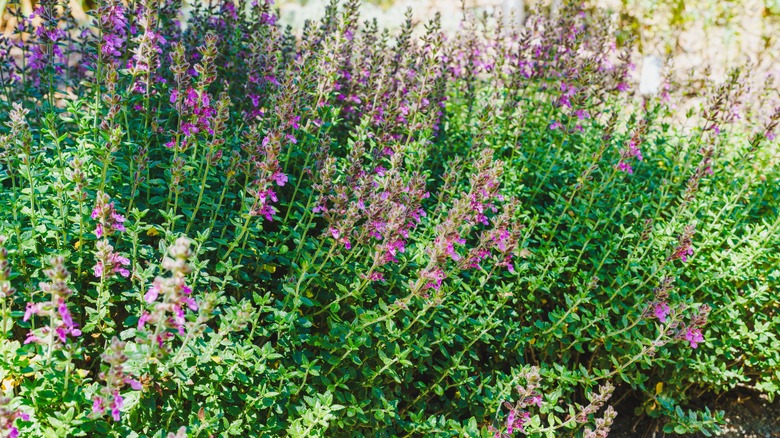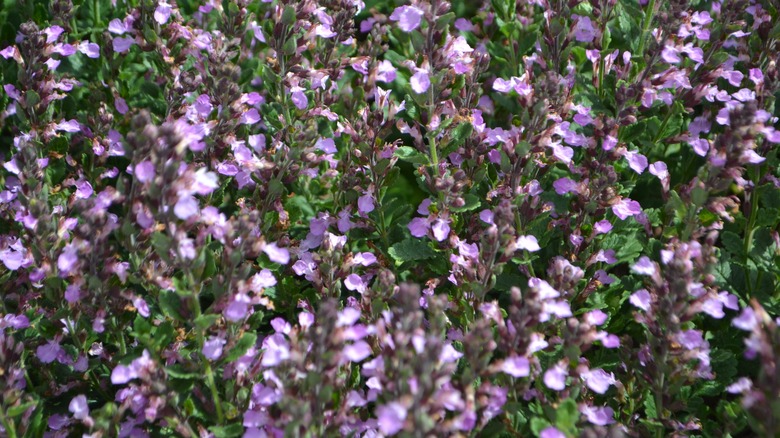Wall Germander Is A Perennial That Can Bring Many Benefits To Your Garden
Gardeners looking for attractive, low-maintenance, fragrant ground cover need look no further than wall germander (Teucrium chamaedrys). Originally from the Mediterranean regions of Europe, Africa, and the Middle East, this shrubby evergreen herb boasts glossy foliage — scalloped like tiny oak leaves — and eye-catching clustered spikes of tube-shaped purple or pink flowers. In addition to its ground cover applications, it grows well in containers or as part of a rock garden, edging, or a low hedge.
Long ago, germander was prescribed as part of medieval treatments for gout and other illnesses, but today, its uses are primarily ornamental (consumption is actually discouraged, as it may lead to severe liver damage.) Wall germander is part of the mint family, and like its relatives, it releases an aroma when bruised or crushed that has been compared to garlic. In fact, it is often dried for use in potpourri or as part of fragrant wreaths.
Wall germander's vibrant blooms are not only beautiful, but are also beneficial to the rest of your garden: they're loved by bees and butterflies. Another benefit is that while it draws in pollinators, it's a flower that can repel rabbits and deer. So if marauding herbivores are an issue for your garden, an excess of wall germander might encourage them to forage elsewhere.
Growing and caring for wall germander
Well-suited to USDA Hardiness Zones 5 through 9, this drought-resistant little shrub loves full sun, but can also tolerate partial shade (albeit possibly with fewer blooms), making it one of the best ground covers for a sunny area. Like many plants that come from Mediterranean climates, germander is hardy and isn't picky about soil — even rocky or sandy soil will do — but it does need good drainage and does not like excessively wet soil or soggy roots. It tends to be quite resistant to pests and disease, but has been known to be susceptible to mildew, rust, and leaf spot.
Wall germander blooms in spring and early summer, and should be pruned to your desired tidiness to eliminate the dead flowers and encourage bushier, denser growth before the winter. Because of its evergreen nature, even after its blooming season and through the winter months it will add a lovely touch of green to your garden.
Of note: although it is not considered invasive, wall germander can proliferate beyond where you intended it to grow, as it is a self-pollinating plant that can spread via rhizomes — that is, underground and ground-level creeping stems that grow sideways and produce upright shoots. If not given enough space or kept under control, wall germander can become a bit of a bully in your garden. Regular removal and pruning can help keep it in check, but its spreading habit isn't all bad. In fact, it's a great solution for limiting soil erosion.

